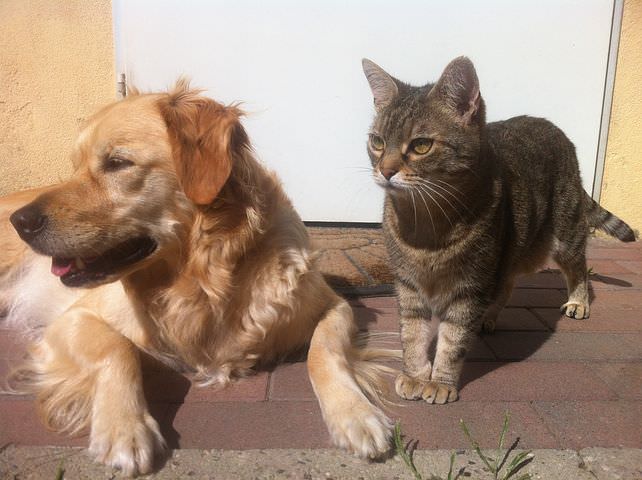Everyone knows what dogs do when they greet you. Sometimes they frantically sniff you, possibly in a very invasive and private way. But when cats greet you, they are not quite so boisterous or personal. Cats are very different from dogs at a fundamental level. Comparing our canine and feline friends is interesting.
Dogs have a very acute sense of smell and they depend on their noses for a lot of their survival. Dogs also identify one another through distinctive scents. Dogs have evolved into a scavenger species. They use their noses to find food. DNA studies have indicated that dogs possess over 800 genes related to olfaction (or smell). 1
Cats are carnivores. They do not rummage around for their food, but instead must hunt for it. In order to do so, they rely on more than just their nose. They use their more long-distance sensors like their ears and their eyes and specially adapted organs, like the vomeronasal receptors. Vomeronasal organs are specially adapted for the detection of other chemical signals besides odors, like pheromones. In the cat, there are 21 genes responsible for the abilities of the vomeronasal receptors compared to dogs’ 8 genes related to this ability.
There seems to have been a “genetic trade-off” among species. Animals appear to be either strongly evolved to utilize scent like dogs (multiple olfaction genes) or to rely on other chemical markers through the receptors like vomeronasal ones, but not both to a strong degree. There are other interesting genetic trade-offs among animals. It appears that primates traded their strong olfactory senses for the ability to see multiple colors 2.
The traits that your cat displays are uniquely feline in many cases, even though some people swear that their cat acts like a dog. Some qualities are genetically programmed and some are learned behaviors. Your cat will probably never sniff you frantically or sloppily lick your face, but it does not mean that she is not glad to see you. She has perceived your presence in her own unique way. Different species have evolved to have very different and interesting traits and abilities, but all species are interesting and fun to learn about!
Do you love learning about cats? I love sharing about them! Look me up on Facebook by clicking here.
- Montague MJ, Li G, Gandolfi B, Khan R, Aken BL, Searle SM, Minx P, Hillier LW, Koboldt DC, Davis BW, Driscoll CA, Barr CS, Blackistone K, Quilez J, Lorente-Galdos B, Marques-Bonet T, Alkan C, Thomas GW, Hahn MW, Menotti-Raymond M, O’Brien SJ, Wilson RK, Lyons LA, Murphy WJ, Warren WC.Comparative analysis of the domestic cat genome reveals genetic signatures underlying feline biology and domestication. Proc Natl Acad Sci U S A. 2014 Dec 2;111(48):17230-5. doi: 10.1073/pnas.1410083111. PubMed PMID: 25385592; PubMed Central PMCID: PMC4260561
- Gilad Y, Przeworski M, Lancet D.Loss of olfactory receptor genes coincides with the acquisition of full trichromatic vision in primates. PLoS Biol. 2004 Jan;2(1):E5. Erratum in: PLoS Biol. 2007 Jun;5(6):e148. Wiebe, Victor [removed]; Paabo, Svante [removed]. PubMed PMID: 14737185; PubMed Central PMCID: PMC314465.


